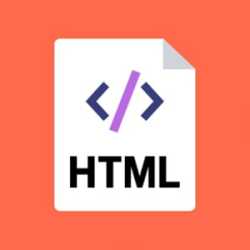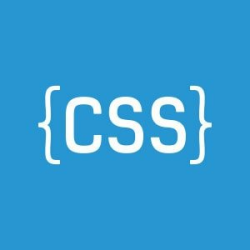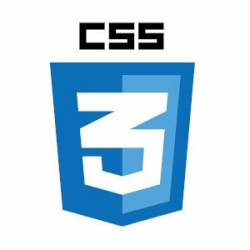Best Practices for Drafting Civil Engineering Reports

Best Practices for Drafting Civil Engineering Reports
Effective report writing is a crucial skill in civil engineering. Whether you are a student working on an academic project or a professional preparing a technical document, the ability to convey information clearly and concisely is essential. A well-structured civil engineering report ensures that findings, designs, and analyses are communicated effectively. If you are looking for Engineering Assignment Help, understanding the best practices for drafting a comprehensive report can significantly improve the quality of your work.
To Consider the Purpose of the Report
Every civil engineering report serves a specific purpose, such as presenting research findings, detailing project progress, or outlining structural analysis. Clearly defining the objective helps in structuring the content appropriately. Before drafting, consider the following:
Who is the target audience?
What is the main point you wish to make?
How should the information be organized for maximum clarity?
Identifying these aspects ensures that the report remains focused and relevant.
Structuring the Report Properly
A civil engineering report should follow a logical sequence, typically including:
Title Page: Clearly state the topic, author’s name, date, and affiliation.
Abstract: A concise summary of the report, including objectives, methodology, key findings, and conclusions.
Introduction: Provide background information and outline the scope of the report.
Methodology: Explain the techniques, materials, and approaches used.
Findings and Discussion: Present data, analysis, and interpretations.
Conclusion and Recommendations: Summarize findings and suggest practical applications or further research.
References: List all sources cited in the report.
Following this structure enhances readability and professionalism.
Maintaining Clarity and Precision
Civil engineering reports should be precise and free from ambiguity. Use clear and straightforward language to ensure that technical details are easily understood. To enhance clarity:
Avoid unnecessary jargon and overly complex sentences.
Use bullet points and numbered lists for better readability.
Define technical terms when introducing them for the first time.
Precision in wording helps in delivering a coherent and effective report.
Incorporating Data and Visuals Effectively
Engineering reports rely heavily on data to support conclusions. Proper presentation of data enhances understanding and credibility. Key considerations include:
Using tables, graphs, and charts to illustrate findings.
Labeling figures and providing explanatory captions.
Ensuring that all data is sourced accurately and referenced appropriately.
Visual aids should complement the text rather than replace detailed explanations.
Ensuring Technical Accuracy
Since civil engineering reports deal with precise calculations and specifications, technical accuracy is paramount. To maintain accuracy:
Double-check all calculations and measurements.
Validate sources and references.
Use appropriate engineering standards and codes.
A technically accurate report not only enhances credibility but also prevents costly errors in engineering applications.
Emphasizing Logical Flow and Coherence
A well-organized report follows a logical progression of ideas. Make sure that every part flows naturally into the next. Strategies for maintaining coherence include:
Using topic sentences to introduce paragraphs.
Linking sections with transitional phrases.
Keeping discussions focused on the main objective.
Logical organization improves reader engagement and comprehension.
Writing an Effective Conclusion
The conclusion should summarize the main findings concisely and suggest actionable recommendations. It should:
Recap the report’s purpose and key results.
Provide insights into practical applications.
Suggest areas for further research or improvement.
A well-crafted conclusion reinforces the report’s significance and impact.
Reviewing and Editing the Report
Before finalizing the report, thorough review and editing are necessary. Important steps include:
Checking for grammatical and spelling errors.
Ensuring consistency in formatting and citation style.
Verifying that all required sections are included and properly structured.
A well edited report exhibits professionalism and meticulousness.
Following Standard Formatting Guidelines
Different organizations and institutions have specific formatting requirements. Adhering to these guidelines is essential. Key aspects include:
Using appropriate fonts and spacing.
Consistently formatting headings and subheadings.
Following citation and referencing standards, such as APA or IEEE.
Standardized formatting enhances readability and professionalism.
Seeking Feedback and Continuous Improvement
Improving report-writing skills is an ongoing process. Seeking feedback from peers, instructors, or mentors can provide valuable insights. Key approaches include:
Participating in discussions and peer reviews.
Learning from past mistakes and applying corrections.
Utilizing Engineering Assignment Writer for expert guidance.
Regular practice and constructive feedback contribute to better engineering report writing over time.
Avoiding Common Mistakes in Engineering Reports
Many engineering reports fail to meet expectations due to avoidable mistakes. Some common pitfalls include:
Lack of clarity in objectives and conclusions.
Inconsistent formatting and citation styles.
Insufficient data analysis and validation.
By recognizing and addressing these issues, engineers can improve the overall quality of their reports.
Enhancing Readability with Concise Writing
Overly lengthy and complex reports can be difficult to read and interpret. To enhance readability:
Keep sentences and paragraphs concise.
Use active voice instead of passive voice.
Focus on delivering key information without unnecessary elaboration.
A well-written report conveys information efficiently and keeps the reader engaged.
Keeping Reports Professional and Objective
Engineering reports should maintain a professional and objective tone. Avoid informal language, personal opinions, or emotional expressions. Key points to remember include:
Sticking to facts and evidence-based conclusions.
Presenting unbiased analyses and recommendations.
Writing in a formal and structured manner.
Professionalism in writing enhances credibility and ensures that the report is taken seriously.
Using References and Citations Effectively
Citing sources correctly is essential to avoid plagiarism and support findings. Guidelines for effective referencing include:
Citing all data, research, and external sources accurately.
Using a consistent citation style throughout the report.
Including a well-formatted bibliography or reference list.
Proper referencing strengthens the reliability and academic integrity of the report.
Conclusion
Drafting a high-quality civil engineering report requires careful planning, technical accuracy, and clear communication. By following best practices such as maintaining structure, ensuring precision, incorporating visuals, and adhering to formatting guidelines, engineers can create reports that are both informative and professional. Continuous improvement through feedback and practice further refines reporting skills, contributing to successful engineering documentation and communication. Whether for academic purposes or professional applications, mastering these principles leads to better-written reports and improved project outcomes.
FAQs
What are the key components of a well-structured civil engineering report?
A well-structured civil engineering report includes a title page, abstract, introduction, methodology, results, discussion, conclusion, and references. Proper formatting, clear headings, and logical flow enhance readability and professionalism.
How can I ensure clarity and precision in my civil engineering report?
Clarity and precision can be achieved by using concise language, avoiding technical jargon where unnecessary, and presenting data in an organized manner. Graphs, tables, and diagrams should be well-labeled and directly support the content.
How do I effectively present data in a civil engineering report?
Data should be presented using well-organized tables, graphs, and charts. Labeling axes, including units of measurement, and providing brief explanations for each figure make the data more understandable and meaningful.
How can I improve the technical accuracy of my civil engineering report?
Improving accuracy requires verifying calculations, referencing reliable sources, and cross-checking information with engineering standards and codes. Peer reviews and consulting experts can further enhance report credibility.











Please login or create new account to add your comment.